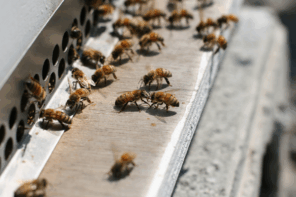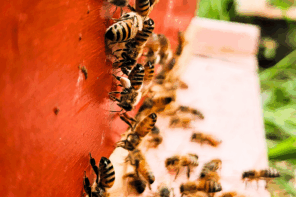Sweet ’68 Corvette
Ed Colby
I’ve known three grown men who were convinced that – within a matter of weeks – treasure-laden Spanish galleons would be salvaged from the depths of the Caribbean, and that they – investors in these unlikely enterprises – would become rich beyond your wildest dreams. One was a likeable young man fresh out of the Navy, who did odd jobs around the farm. He told my ex Linda that he planned to buy a Lamborghini once the jewel chests got pried open and all the Aztec gold and silver weighed and sold to the highest bidder.
How do you talk someone down from such an illusion? Linda put it this way: “This is tragic. He’s such a nice young man, and I really want him to get that car. I want his dreams to all come true.”
My gal Marilyn owns the oldest house in town. It’s a diamond in the rough, but her renters cover the mortgage and taxes. She lives here on the farm with me and her blue heeler Pepper, along with her lambs and chickens and her dead 1992 Volvo, for practically free. I call this a really good deal.
A few weeks ago when her tenant had us over for his birthday party, he made an announcement. He’d struck a deal to trade his partially restored 1970 K5 Chevy Blazer for a sweet 1968 Corvette that just needs a little brake work. He showed us photographs of the Corvette. The Blazer was already gone. Two Russians picked it up. Seriously, Russians! All David had to do now was straighten up some hang-up with the title, send it off to Texas, and wait for his ‘Vette to show up. He was pumped. My scam antenna immediately popped up, but for once I kept my mouth shut. It was his birthday, after all.
A Blazer for a Corvette? To me it sounded like trading a sack of potatoes for a bucket of Tupelo honey. But what do I know?
Marilyn and I talked this over. A couple of days later I dropped by. I cautioned David that he might want to hang onto that title, until he got something in return. He allowed as how getting scammed had entered his mind but then showed me some legitimate-looking documents from the seller, who insisted that he receive the Blazer title before the Corvette got shipped. Against all odds, David was committed. Within days the seller had both the Blazer and the title. David had nothing. I told Marilyn, “That Blazer’s at a Denver chop shop!” Once a fish swallows the hook, you’ve got him. There was nothing more I could do.
But this is a bee magazine, so let’s talk about beekeeping! Why do we make it so complicated? Grandma had bees on the ranch, and I’m pretty sure she didn’t spend much time “looking for the queen” or stressing over bee diseases. This was long before Varroa mites, and it was Montana, so she probably fed some sugar syrup when spring didn’t arrive on schedule. But I suspect she mostly just put on supers and harvested honey.
When Grandpa got behind on the mortgage, Doc Packard repossessed the ranch. He informed the good citizens of Jefferson County that, “If Bill Vanderhyde can’t ranch, I’ll by God find a man who can!” That stung. You bet it did.
Grandma and Grandpa bought the house in Whitehall with money Grandma had squirreled away over the years from selling apples and honey.
Except for those darned Varroa mites, beekeeping today isn’t so different from Grandma’s time. To keep your bees alive requires that those little darlings have adequate honey stores. In addition, bees need some relief from mites and the viruses associated with Varroa. Even if you apply a chemical mite treatment for Varroa — and you’ll almost certainly need to – you need to confirm that the treatment worked. You might need a Plan B. If your bees get American foulbrood (AFB), you’ll need to deal with it, so as to not infect the neighborhood.
Other things are important but maybe not critical. If your bees swarm, well, so what? Maybe you have some chalk brood or European foulbrood. They’re generally not fatal. Keep your eye on the ball! If your main goal is to keep your little darlings alive, then most bee “problems” aren’t really that important – or, like pesticides, they’re out of your control. Stress over what really matters and what you can actually impact: honey stores, mites, AFB.
If beekeepers, especially backyarders, spent half the time monitoring and controlling mites that they waste obsessing over hive insulation, they might learn that uninsulated hives with very low mite populations winter much better than insulated hives with higher mite numbers. Unless you live an extremely cold place, like the interior of Alaska, cold weather won’t kill your bees. But mites will.
AFB’s a little tricky, but you might never see it. So don’t borrow trouble, OK? This is generally a struggling hive, with sunken, perforated, capped brood cells with dark goo inside them. AFB has a distinctive and occasionally overpowering smell that you won’t forget. The “ropy test” is pretty definitive. You poke a matchstick into a brood cell, and if goo sticks to it and stretches like mucus when you pull the matchstick away, that’s AFB.
Have I made this simple enough? Do you think me wise? I must know what I’m talking about if I write for Bee Culture, right? Please. I can get it wrong, too, just like you.
Take that car scam I pontificated about earlier. I have an update. When I drove past Marilyn’s house this morning, there was a shiny blue 1968 Corvette parked outside.









